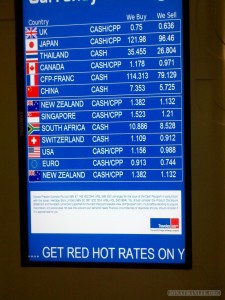A couple of weeks ago, some friends asked me for advice on choosing life insurance. In response, I wrote up this essay.
Introduction:
Every year, people will die unexpectedly. The chance of it happening to you in particular is pretty low (see actuarial tables: https://www.socialsecurity.gov/oact/STATS/table4c6.html), but when it does happen, it’s pretty rough for everyone involved. And so, the original idea behind life insurance, as well as insurance in general, is to pool risk. Everyone contributes some money, and the proceeds are divided up to those who got the short end of life’s straw. When insurance companies come into the equation, they basically look at actuarial tables to determine how much you should contribute per year, based on the probability of you dying, plus a little extra to cover administrative expenses, etc. They then take the proceeds and invest them “prudently” to keep assets (the amount of money on hand) greater than liabilities (the amount they have to pay out).
Traditionally, a form of insurance called term life insurance has been used. In this scheme, you agree pay $X per month for the next year / 10 years / 20 years. If you die, your family or beneficiaries receive a predetermined payout. If not, woohoo! You’re still alive and can continue to be the breadwinner for your family. This is your basic “vanilla” insurance scheme, and it’s quite boring. On the other hand, you’ve got something like whole life insurance.
There are a lot of variations, but the general gist is that you pay a much larger monthly payment, but a portion of your premium is allocated to some “cash balance”. If you die, your family or beneficiaries receive the predetermined amount. If you keep living though, you can someday decide to “cash out” of the policy and decent chunk of change, or borrow against the balance (for a mortgage, etc).
So basically,
Whole life insurance = term life insurance + additional forced savings.
I believe that the most efficient way to do things is to get term life insurance when you need it, but otherwise just put your money in a savings or retirement account, which will basically get you the same results as whole life insurance.
The Three Factors of Whole Life vs. Term Life insurance:
Premium costs:
– Premiums for term life insurance are much cheaper than whole life insurance premiums
– The mortality rate for young folks is pretty low, and so short term life insurance premiums are very low, but will go up every year that you renew your insurance
– In contrast, since whole life insurance has typically fixed premiums, you start out paying a lot more, since you’re also covering the higher chance of you dying in your later years. The forced savings component also increases premiums
Fees:
– Insurance companies make a lot more money from selling whole life insurance than they get from selling term life insurance
– For term life insurance, there are basically no fees. You keep paying your premiums, and if you die, money is paid out to the beneficiary.
– For whole life insurance, there are usually a lot of fees. Fees for cashing out of your policy early, annual fees for investing your cash balance, etc. If you drop your whole life insurance part way through, you could lose a lot of money.
Returns:
– You’ll probably get better returns from just investing with Vanguard’s index funds (and lower fees too), instead of relying on whole life insurance for savings.
Reasons for getting life insurance:
There have typically been two motivations behind getting life insurance:
1) This is important – taking care of dependents in case you can no longer be a breadwinner. To illustrate, I do not have life insurance – I don’t need it. If I die, hopefully my friends will come to my funeral to send me off into the great beyond, but my death isn’t screwing anyone over. I don’t have kids that I’m responsible for, I’m not supporting a wife, I don’t have a mortgage, my parents should be fine without me. In contrast, think about a husband, with a pregnant stay-at-home wife and mortgage. He wants to get life insurance – so that if he gets hit by a bus, his wife will have enough money to raise the children and keep the house.
This is also where term life insurance is very useful – to cover those 20 years of your life when you have many dependents but few assets. After you’ve built up a nest egg, even if you kick the bucket, your savings should provide some protection to your family.
2) Taxes and estate planning. Life insurance premiums are not (currently) taxed – and the insurance industry does a tremendous amount of lobbying to keep it this way. In contrast, if you want to pass money directly to heirs, you usually have to pay some sort of estate tax. This is usually a concern for people a lot more wealthy than us.
Conclusion
Without knowing your individual circumstances or the plan they’re offering you, I can’t recommend that you take any particular path. However, just by looking at the overall financials, if you decide to get life insurance, I recommend that you go with term insurance instead of whole life insurance. But before that though, I do recommend that you make sure you need life insurance, and you’re not getting it just because you can.



